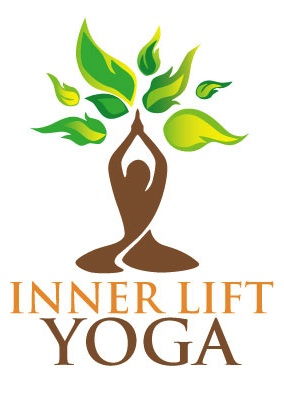I recently read a revolutionary book called Yoga Body: The Origins of Modern Posture Practice. Its author, Mark Singleton, asserts that modern yoga practice derives less from ancient India than from—get this—Western gymnasts and bodybuilders! Ancient yoga primarily concerns itself with training the mind, with few physical postures, and the physical yoga we love is mostly an outgrowth of the “physical culture” movement of the late 19th century. The movement took off in India, where people were ready to literally strengthen themselves to gain independence from the Brits. We hear all about Ghandi and his successful nonviolent approach, but there were also Indians such as Manick Rao, a wrestler and militant who innovated strength-building exercises to prepare the people for revolution, exercises that would later be called “yoga.”
So this book traces the lineage of our current physical yoga practice from a nineteenth-century Swedish gymnast named Ling to Pratinidhi Pant, the guy who invented sun salutations at the start of the 20th century—I thought they were timeless!—and up to Krishnamacharya, the yoga master who taught B.K.S. Iyengar and Pattabhi Jois, the men who devised the practice that we now know.
Pattabhi Jois is the reason I practice yoga. I was only a dabbler until I found the tradition that Jois introduced to the West: Ashtanga Vinyasa Yoga, a strict, physically-demanding tradition that insists upon daily practice. Practicing Ashtanga, I got consistent enough to realize the gifts of a yoga practice: strength, flexibility, steadiness of mind.
At some point, I had heard that Ashtanga Vinyasa Yoga was not an ancient sequence of poses, as Jois always claimed, but an activity invented for royal Indian schoolboys. This book supports that theory and looks at the cultural context behind it. When Jois’s teacher, Krishnamacharya, was starting out as an instructor at the royal yoga shala (studio) for the Maharaja of Mysore, physical culture was wildly popular. Most of the boys Krishnamacharya instructed would have preferred to be in the muscle-building class offered next door. To make yoga more popular, then, the Maharaja likely asked the teacher to come up with something physically-impressive to watch, which also had an added bonus of entertaining royal guests. And it was true that Krishnamacharya and his students gave many demonstrations of this acrobatic, thrilling practice with its jumps and contortions.
However, this story doesn’t give the Ashtanga Yoga practice much legitimacy, which might explain why Jois insisted that his teacher Krishnamacharya learned the Primary Series from a 5,000-year-old text called the Yoga Kurunta. Fortunately, the author softens the unsettling fact that Jois may have been lying by explaining that Indian gurus (at least old-school ones like Jois) would rather be seen as part of a lineage than get credit for their innovations.
I find an important message in this new version of asana history: everything is adaptable. When I started practicing Ashtanga yoga fourteen years ago, I felt I had to strictly follow all the “yoga rules” because how could my little insights compete with an ancient practice? Sure, I built strength, but this yoga was also ruining my knees, as I put myself through acrobatic paces designed for 14-year old Indian boys. However, in knowing that these rules aren’t ancient laws but simple inventions by other modern people, then each of us can find the freedom to improvise our practice based on observing what works best for us. And thank God that’s what I’ve come to do with my yoga (now that I modify my practice, my knees are great), and what I encourage my students to do—observe, experiment, and even—hey, why not?—play.
It's great taking yoga off the mat!

